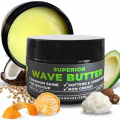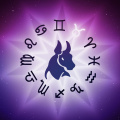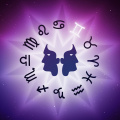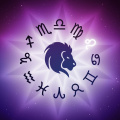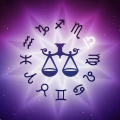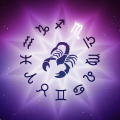15 Highest Protein Beans That You Can Add to Supercharge Your Meals
Beans are tasty, and healthy food choices you can opt for. Let's take a quick look at the benefits of some of the highest protein beans that can enhance your meal.
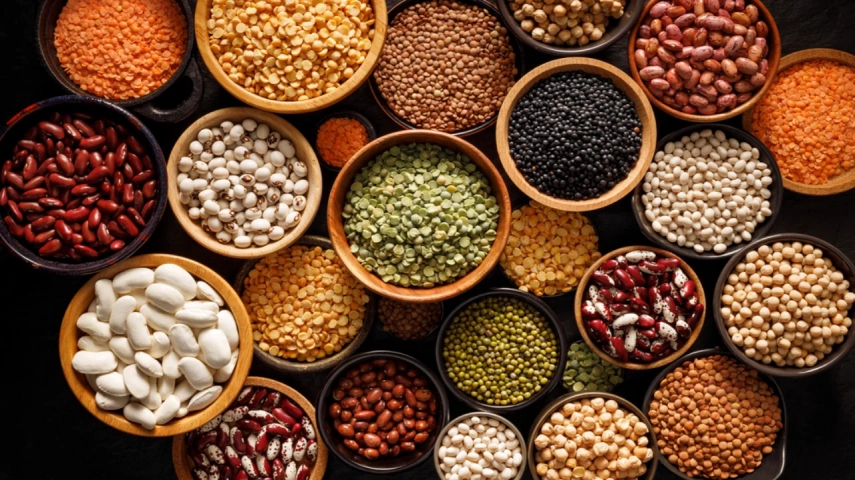
It is essential that we include some of the highest protein beans to ensure a healthy and balanced meal plate. Beans are an excellent nutritional source, particularly in terms of protein content. They are a type of legume. To make things clear, the edible seed of a legume is called a pulse. Some common examples of pulses include beans, lentils, and peas. These types of legumes are a valuable protein source in today’s world. They have inevitably become an essential component of a healthy diet. They are not just healthy but also cost-effective.
From soybeans to pinto beans, we will explore a comprehensive list of 15 types of beans with the highest protein content.
Why Is It Important to Eat Beans?
Beans offer a delightful combination of soft texture and earthy flavor. This makes them a versatile ingredient in culinary traditions worldwide. Furthermore, their amazing protein content makes them a suitable substitute for meat in certain instances. They are not just rich in proteins, but also a nutritional powerhouse. They are packed with essential vitamins, minerals, and macronutrients.
Beans are also cost-effective and boast an extended shelf life. These characteristics make them an economical and practical choice for individuals seeking sustained nourishment and convenience in their dietary choices.
Worldwide, there is an extensive range of over 400 types of beans. This can also present a challenge when it comes to choosing the most suitable ones for your meal. To assist you in navigating this wide selection, let's provide a brief overview of protein-packed beans and their associated benefits.
According to Dt. Lavleen Kaur, Co-founder and Head Dietitian of Diet Insight, “Peas are not a better source of protein than beans. Beans generally have higher protein content than peas. While peas contain around 5-6g of protein per 100g, beans like soybeans can offer up to 36.5g per 100g. Beans are thus a more concentrated protein source compared to peas.”
Are Beans Good for Your Health?
Here are six compelling reasons that highlight the exceptional health benefits of beans. This leaves no room for doubt when it comes to integrating them into your diet.
1. Proteins
Beans offer a significant quantity of high-quality protein. This presents an excellent option for people who are seeking alternatives to animal-based protein sources. Protein in beans plays a vital role in tissue building and repair, muscle growth support, and bolstering the immune system.
2. Fibers
Another notable feature of beans is their remarkable fiber content. Fiber plays a vital role in ensuring a healthy digestive system and facilitating regular bowel movements. By incorporating beans into your meals, you can enhance your fiber intake, potentially preventing constipation, regulating blood sugar levels, and supporting weight management.
3. Anti-inflammatory
Beans are like superheroes when it comes to fighting inflammation. They have this amazing power to reduce those markers in our bodies that are associated with chronic conditions like heart disease, kidney problems, and diabetes (1). So, if you want to keep those conditions at bay, beans are your secret weapon.
4. Heart Health
Scientific studies suggest that incorporating beans into your diet can contribute to a healthy heart (2). The abundance of fiber in beans aids in reducing cholesterol levels. This lowers the risk of heart disease and promotes cardiovascular well-being. Moreover, beans contain essential nutrients like potassium, magnesium, and antioxidants, which actively support optimal heart function.
5. Blood Sugar Regulation
Beans are the best options if you're looking to keep those blood sugar levels in check. They have got a low glycemic index, which means they have less impact on blood sugar levels. Thus they are the best options for people with diabetes.
The combination of fiber and complex carbohydrates in beans also facilitates a gradual release of sugar (3). This means you can go ahead and enjoy some beans without worrying about those sugar spikes.
6. Battles Obesity
Beans are not only high in protein, but also low in fat, and have high fiber content. This aids in promoting satiety and curbing excessive food cravings. By incorporating beans into your meals, you can enhance feelings of fullness, potentially resulting in a decrease in overall calorie consumption.
15 Highest Protein Beans
When you dig into half-cup of beans, you are not just treating your taste buds, but you are also giving your body a generous serving of protein. It's usually over 10 grams of protein in a serving. But this can differ depending on the type of bean you are choosing. So, keep in mind that your protein power might vary depending on your bean of choice. Here, let's glance at a list of 15 high-protein beans that can be integrated into your diet for optimal health benefits.
1. Soybean
Protein per 100g - 36.5 g
The soybean gets attention for both its high protein as well as oil content. Soybeans are like the plant version of meat when it comes to essential amino acids. They have got every single one of those important amino acids that our bodies need. This also makes them the best bean for protein.
They contain phytoestrogens, which work similarly to the estrogen hormone in females. As a result, they've been used to compensate for hormone deficits throughout menopause (4).
They have a meaty texture that can be experienced when frying, steaming, or using them fresh in soups, stews, and salads.
2. Flageolet Beans
Protein per 100g - 19.23 g
The flageolet bean is a French variant of the ordinary bean. It is a tiny kidney-shaped bean with a creamy texture and light green color. It's a protein-packed food that's completely free of cholesterol. This makes it an ideal choice for a balanced and nutritious meal.
Usually, they are served with lamb or can also be cooked with chicken and seafood dishes. Like other bean varieties, these tiny ones are awesome when you blend them into a dip. They also play well with others in salads, soups, and stews.
3. Winged Beans
Protein per 100g - 12 g
The winged bean or goa bean is a unique tropical plant. It is one of the beans high in protein.
Not only is it packed with protein, but this bean is also loaded with other nutrients like iron, calcium, vitamin A, and vitamin C.
Every plant part of this bean is edible. You can enjoy the leaves just like spinach, use the flowers in salads, consume the tubers either raw or cooked, and use the seeds in ways similar to soybeans.
4. Mung Beans
Protein per 100g - 24 g
Mung beans or green gram is a versatile ingredient that is used in both sweet and savory dishes. It is also regarded as a significant source of dietary proteins. Mung bean seeds and sprouts are a great option if you want to cut down on calories or manage diabetes. They're also perfect for weight loss. Plus, they have got a mildly sweet flavor. So you can easily substitute them for other beans or veggies in dishes like curries, salads, or soups.
5. Faba Beans
Protein per 100g - 8 g
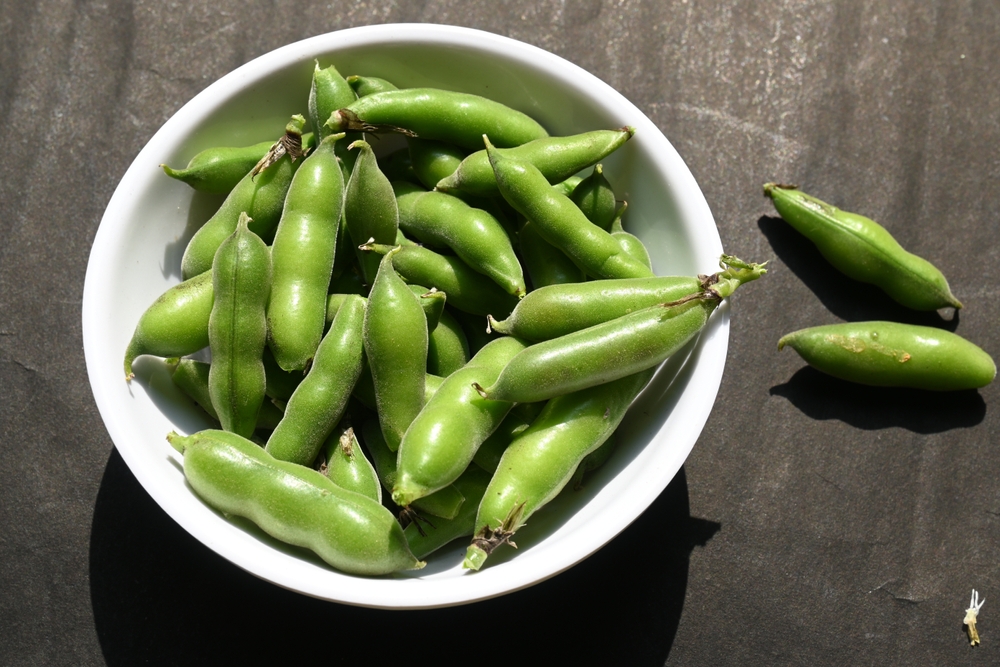
The faba bean is one of the highest protein beans. When it comes to protein-to-carbohydrate ratio, faba beans are better than other popular legumes like chickpeas, peas, and lentils. Moreover, the peptides in faba beans can help fight diabetes, keep your blood pressure in check, protect against inflammation, and lower cholesterol levels (1).
These beans can either be eaten raw or cooked once the outer seed coat has been removed. You can also make simple salads by adding vinegar and fresh herbs to them.
6. Borlotti Beans (Cranberry Beans)
Protein per 100g - 23 g
Cranberry beans, also known as borlotti beans, are tan or hazelnut-colored beans with crimson or magenta spikes. But as the beans are cooked, the flecks disappear and the color becomes uniform and dark. These speckled beans have a chestnut flavor. They are mostly known for their antioxidant and anti-inflammatory properties (5).
You can sprinkle them on your bowl of oatmeal, salads, or even juice them. You can use them fresh or dry but try to avoid eating them uncooked.
7. Haricot Beans (Navy Beans)
Protein per 100g - 8.23 g
Navy beans, commonly referred to as haricot beans, are a fantastic source of nutrients and dietary fiber. It is a dry white bean with a slightly flattened and oval shape. It is also smaller than many other varieties of white beans. These gentle, creamy beans are a powerhouse of folate, thiamine, copper, and manganese.
You can include them in salads, soups, or as toppings in your spaghetti and pasta.
8. Edamame
Protein per 100g - 11.9g
Edamame is green and immature soybeans. They possess a distinct color compared to regular soybeans. They serve as excellent sources of protein and are also rich in calcium, iron, folate, vitamin C, and vitamin K.
Edamame beans can be enjoyed as a delicious snack on their own. However, it is not advisable to consume the shells as they are tough to chew and may pose challenges in swallowing and digestion. These are commonly found in Asian-inspired grain bowls, poke bowls, and stir-fry dishes.
Dt. Lavleen Kaur further says, “Soybean and Edamame do have similar properties. As edamame are young, green soybeans. Both are rich in protein, fiber, and various nutrients. However, edamame is often consumed in its whole pod form and is milder in flavor, while mature soybeans are used for various products like tofu and soy milk due to their higher protein content.”
9. Pinto Beans
Protein per 100g - 21.4 g
Pinto beans are one of the most widely consumed beans globally. They offer antioxidants, particularly kaempferol, which has been associated with potential anticancer properties. Additionally, pinto beans have a low-fat content. This makes them a favorable choice in combating obesity.
They have a characteristic reddish or beige color and have a unique earthy aroma and delightful nutty flavor. They are popular in Mexican and Brazilian cuisines. They can be used as whole or mashed and are commonly used as fillings in tacos and burritos.
10. Chickpeas
Protein per 100g - 8.86 g
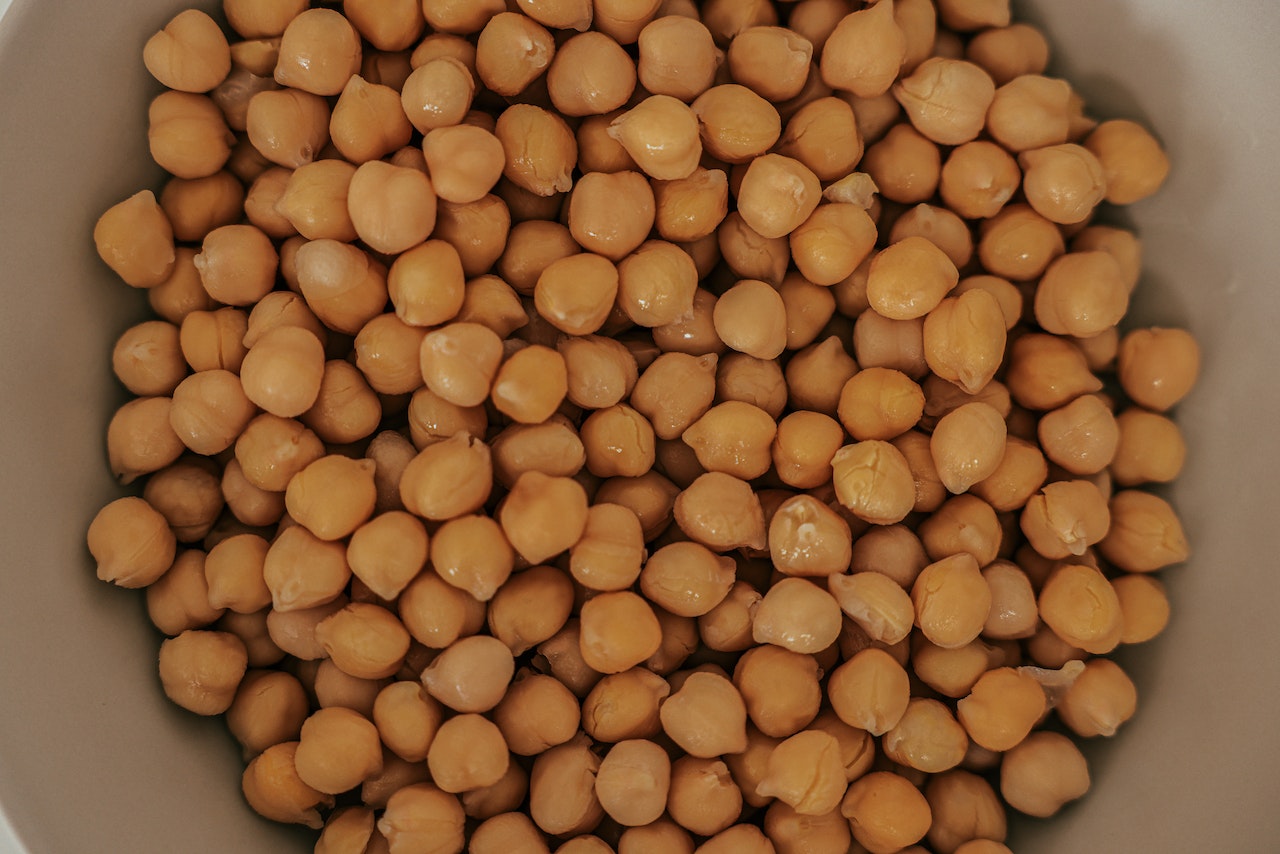
The chickpea or garbanzo bean is a high-protein bean that is a vital part of Middle Eastern and Indian cuisine. It is also a great source of prebiotic carbohydrates, essential fatty acids, and a range of micronutrients (6).
You can add these beans to your salads, soups, pasta, and even to your rice, and meat to enhance them with their creamy texture. If you're in the mood for a satisfying crunchy snack, try roasting them with avocado oil and salt.
11. Black Turtle Beans
Protein per 100g - 21.6 g
Black turtle beans are a rich source of protein as well as iron. This starch plays hard to get with your digestive system, it is not easily broken down like other carbohydrates. So consuming more resistant starch reduces calorie intake and may result in weight loss. This resistant starch in black turtle beans may also help improve insulin resistance (7).
Its dense, meaty texture contributes to its popularity in vegan dishes. You can enhance the flavor of your tacos, salads, burgers, or quesadillas by adding them. You can also make a dip for your nachos and burritos using them.
12. Red Kidney Beans
Protein per 100g - 24 g
These beans resemble tiny human kidneys. They are high in potassium and also contain folate, iron, and thiamine. Usually, they are boiled and consumed well-cooked. Kidney beans that are consumed raw or cooked improperly can be harmful (8). Whereas well-cooked red kidney beans are a great addition to a well-balanced diet.
13. White Kidney Beans
Protein per 100g - 6 g
White kidney beans, often known as cannellini beans, are popular in the Mediterranean region.
But these beans are gaining popularity all around the world due to their nutritional value. They include a lot of protein, which might slow down the digestion of carbohydrates. They have been proven to regulate appetite and facilitate weight loss (9).
They are typically used in Italian cuisine and are an ideal complement to any salad or soup.
14. Butter Beans (Lima Beans)
Protein per 100g - 8 g
Lima beans, also known as 'butter beans', are well known for being a healthy source of dietary fiber. They are an almost fat-free source of high-quality protein. Consuming a high amount of dietary fiber has been proven to enhance glycemic control. This further aids in the management of type 2 diabetes (3).
Additionally, lima beans are rich in a trace mineral that supports the body in detoxifying sulfites that are commonly present in processed foods. You can take those lima beans, and toss them in a pan with some olive oil, garlic, onion, a sprinkle of your favorite fresh herbs, and consume them.
15. Adzuki Beans
Protein per 100g - 20 g
Adzuki bean or red mung bean is a common bean variety in East Asia. These beans are rich in starch, and their proteins carry a balanced variety of amino acids. Their high lysine content often makes up for the lack of protein content in cereals.
These beans are generally eaten sprouted or boiled and are typically accompanied by rice. In certain cuisines, they are boiled with sugar and sweetened before eating.
Conclusion
The highest protein beans offer numerous benefits to support a healthy lifestyle. They are packed with essential nutrients, and protein, which is crucial for tissue muscle growth, and immune system support. Additionally, beans also contribute to regulating blood sugar levels and maintaining a healthy heart. Also, most beans have a neutral flavor, and can effortlessly complement the dishes you already enjoy. You may add them to your salads, and soups, and even make dips out of them. Hence, it's time to invite this culinary delight to your plates.





 JOIN OUR WHATSAPP CHANNEL
JOIN OUR WHATSAPP CHANNEL






































